The following post was written by my mom, WWW. Thanks, WWW!
The other day, I found some new products in the Asian
section of my grocery store—at least they were new to me—gluten free bean pastas made by Explore Asian. I am always trying new gluten-free
products so I bought the mung bean fettuccini to try out. I had already planned to make Thai curry that
night. Instead of serving the curry over
rice, I opted to use the bean pasta instead.
Explore Asian bean pastas are very high in protein, fiber
and iron. In fact, a serving contains
50% of you daily requirement of protein, 45% of your fiber, and 36% of your
iron, not to mention 10% of your calcium.
(That’s 4 times the amount of traditional pastas.) One problem with a lot of the gluten free
pastas is that many of them use white rice and potato starch, neither of which are
very nutritious, so the bean pastas are a fabulous gluten-free option. They can be served with any traditional sauces,
in fact, the Explore Asian website has lots of recipe ideas for their different pastas. (They also have black
bean, adzuki bean, and soybean spaghettis.)
When David was in junior high, he got the cooking bug and
later in high school, he became enamored of Thai food. I gave him a Thai cookbook for Christmas one
year and a friend of ours was so taken by his love of Thai food that she gave
David a kaffir MAKRUT lime tree since makrut lime leaves are an important ingredient
in Thai cooking and can be hard to find in stores. Unfortunately for David, who now lives in
Boston, the tree is still here.
(I send him home with bags full of leaves when he comes to visit.) David’s tree has been growing in a pot on our front patio for 15 years and it provides abundant quantities of leaves for Thai cooking.
(I send him home with bags full of leaves when he comes to visit.) David’s tree has been growing in a pot on our front patio for 15 years and it provides abundant quantities of leaves for Thai cooking.
Anyone can grow makrut lime trees in pots. They like to be
in the sun, but do fine in partial shade or even indoors. They cannot tolerate frost, so if you live in
a cold climate, bring them in during winter months and put near a sunny window. If you love Thai food, I highly recommend
growing a makrut lime tree. They are
really easy to grow and provide that flavor unique to Thai food. Otherwise,
look for the leaves in Asian markets.
Thai cooking can be time consuming, as David and I
discovered when we started cooking from his cookbook. But I have found that quick curries with a
few important Thai flavorings can be made quite easily. Besides makrut lime
leaves, galangal root—a type of ginger—tamarind paste, fish sauce, and Thai
curry paste are other Thai flavorings that are good to keep on hand for making
a quick curry.
The curry I made for this post was really simple. I used fried tempeh as the protein (you could also use tofu) and whatever vegetables I had on hand (green beans, tomatoes, and kale), but other good vegetables for Thai curry are mushrooms, peppers, bamboo shoots, carrots, and Chinese or sugar snap peas.
The curry I made for this post was really simple. I used fried tempeh as the protein (you could also use tofu) and whatever vegetables I had on hand (green beans, tomatoes, and kale), but other good vegetables for Thai curry are mushrooms, peppers, bamboo shoots, carrots, and Chinese or sugar snap peas.
Quick Thai Curry with
Tempeh and Vegetables
1 can coconut milk (I don’t use the low fat)
2 tsp Thai red curry paste
8 makrut lime leaves
2 tsp tamarind paste
2 tsp Thai fish sauce
1 package tempeh
1 small thinly sliced onion
2 cups vegetables of your choice (Chinese peas, sliced red
pepper, green beans, kale, tomatoes, mushrooms, carrots, etc)
Thai basil, or chopped cilantro
In saucepan, combine coconut milk, red curry, and kaffir
lime leaves.
Simmer for about 5 minutes. Meanwhile, slice tempeh and fry in lightly oiled pan until browned on both sides. Set aside, and flash fry onions until tender. Add other vegetables and cook until just wilted. Add vegetables to curry with tamarind paste and fish sauce. Bring to boil and simmer for a few minutes (vegetables should still be slightly crunchy). Add fried tofu and basil or cilantro.
Simmer for about 5 minutes. Meanwhile, slice tempeh and fry in lightly oiled pan until browned on both sides. Set aside, and flash fry onions until tender. Add other vegetables and cook until just wilted. Add vegetables to curry with tamarind paste and fish sauce. Bring to boil and simmer for a few minutes (vegetables should still be slightly crunchy). Add fried tofu and basil or cilantro.
If using
mushrooms or tomatoes (see first photo), add now. Cook another couple of minutes. Adjust seasoning to your taste. Serve over
rice or bean pasta.
Enjoy!
Love,
WWW

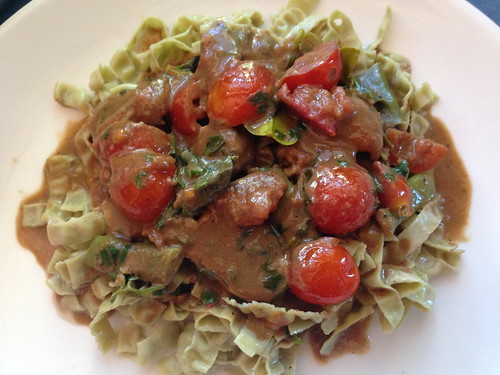
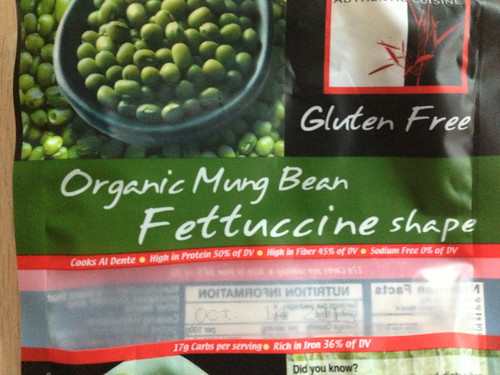

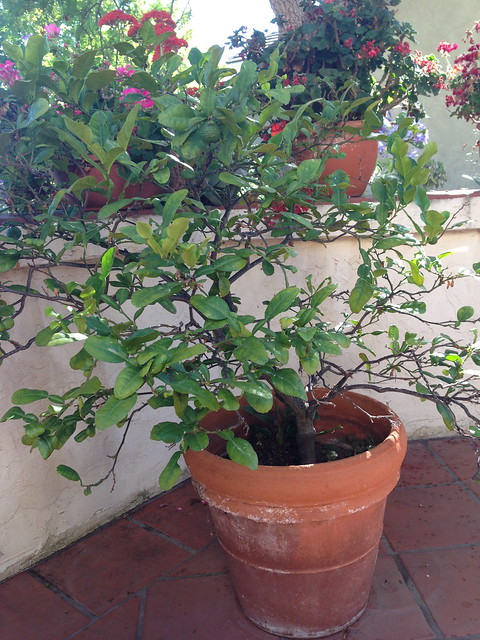
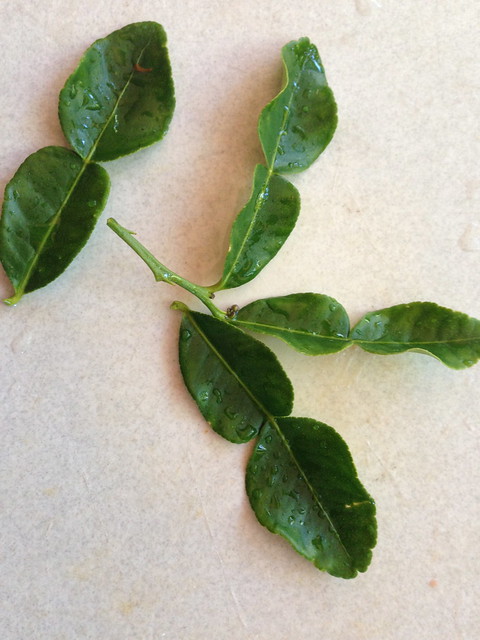
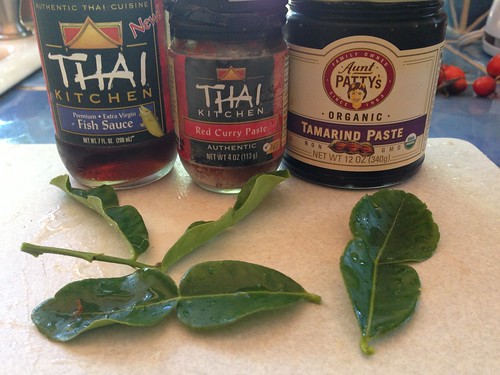
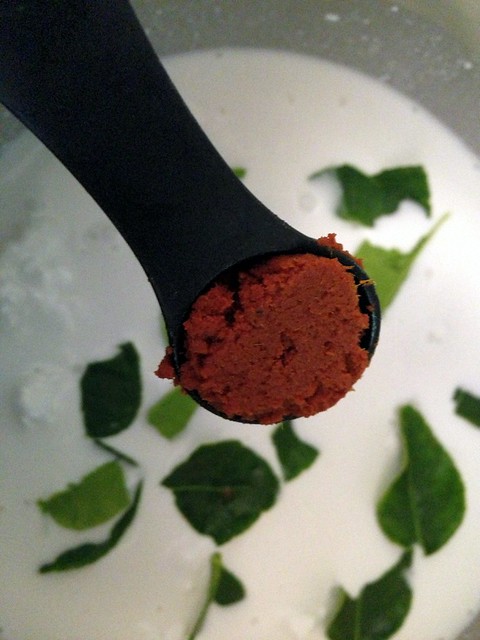
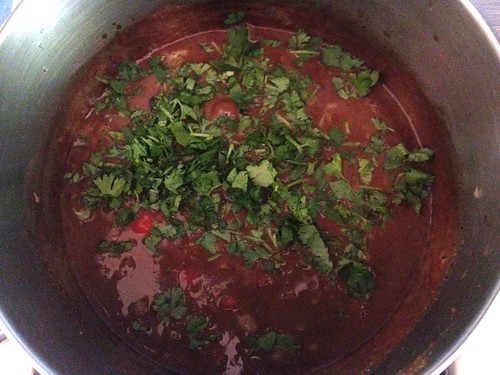
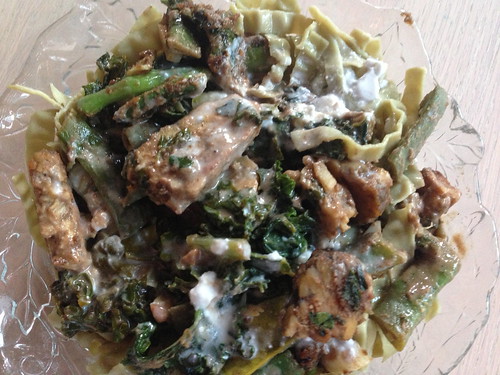

0 comments:
Post a Comment